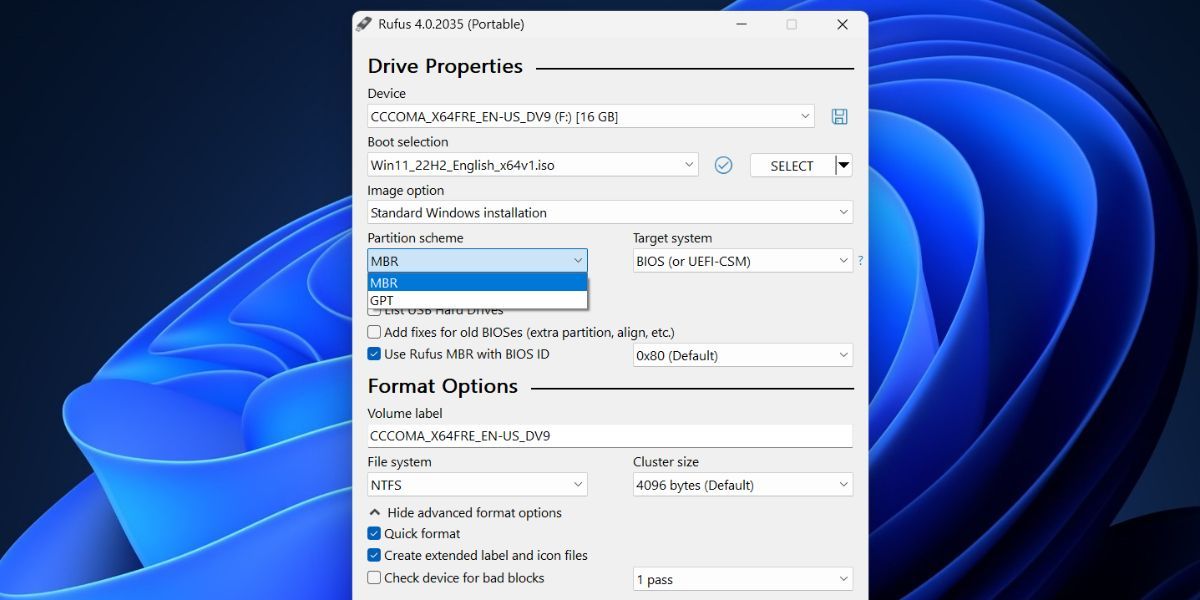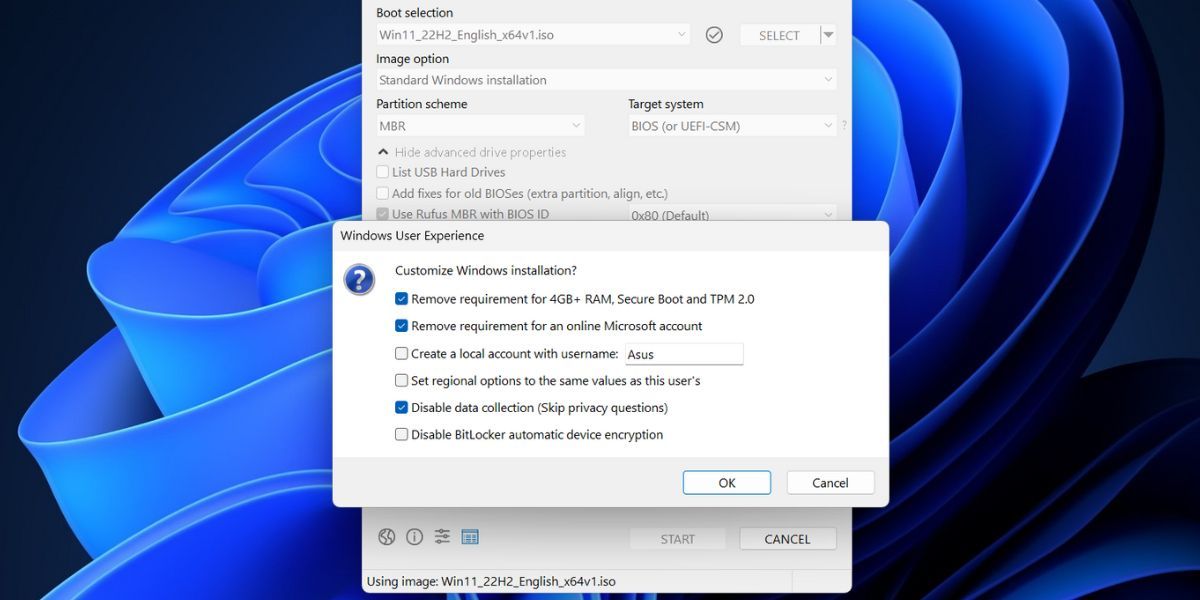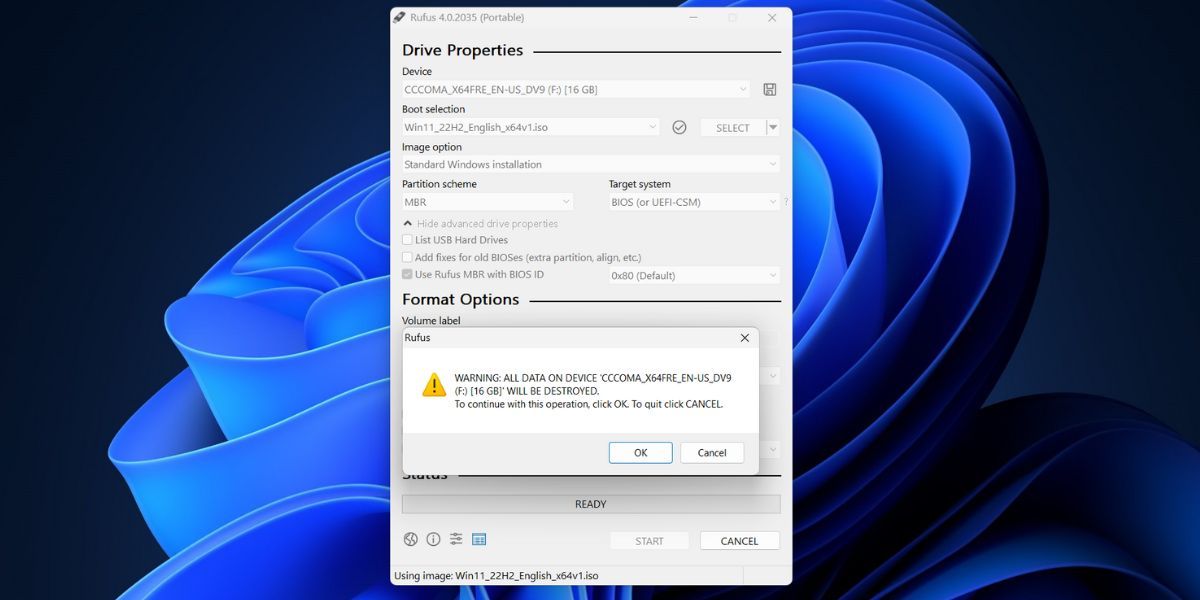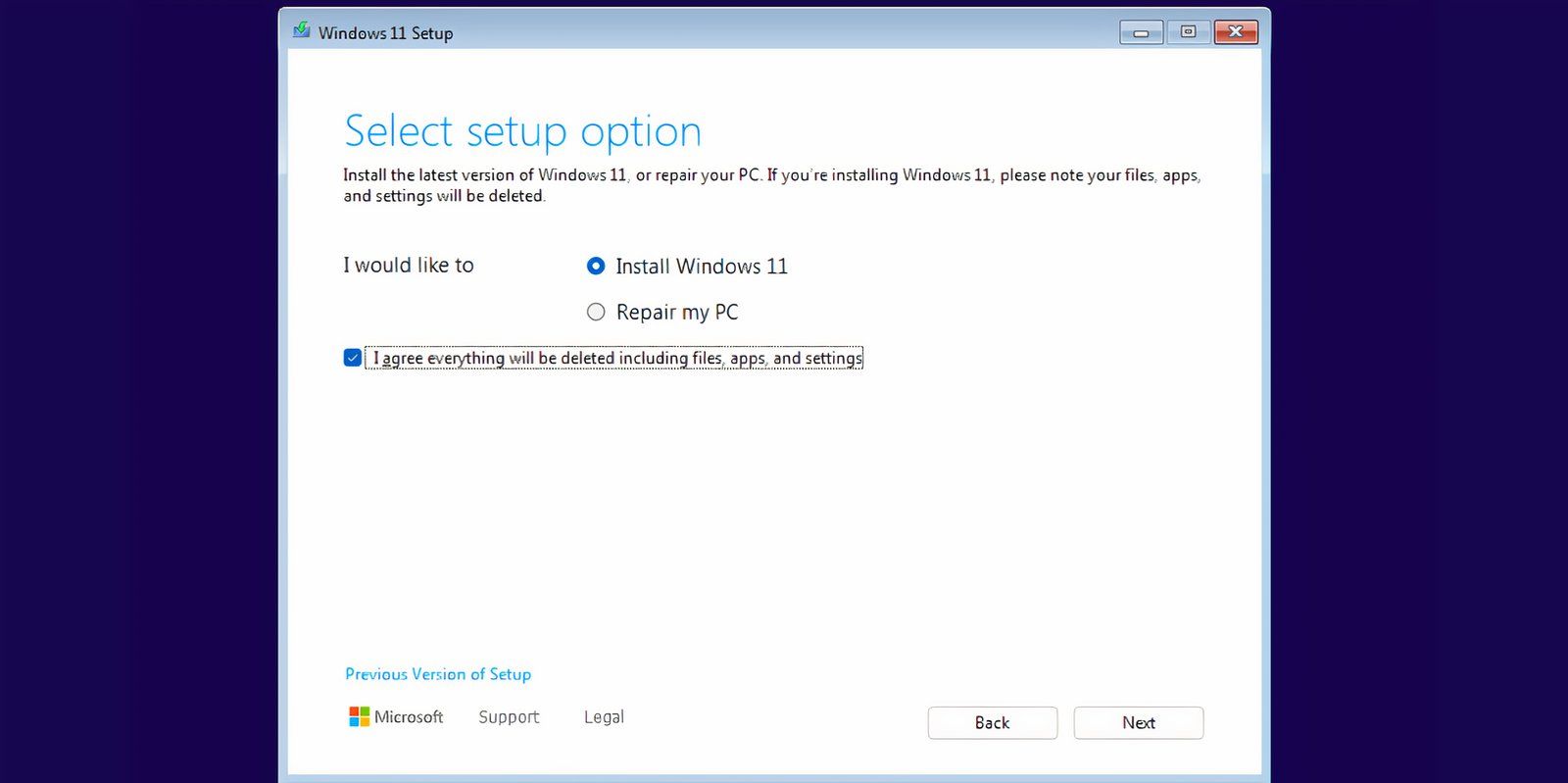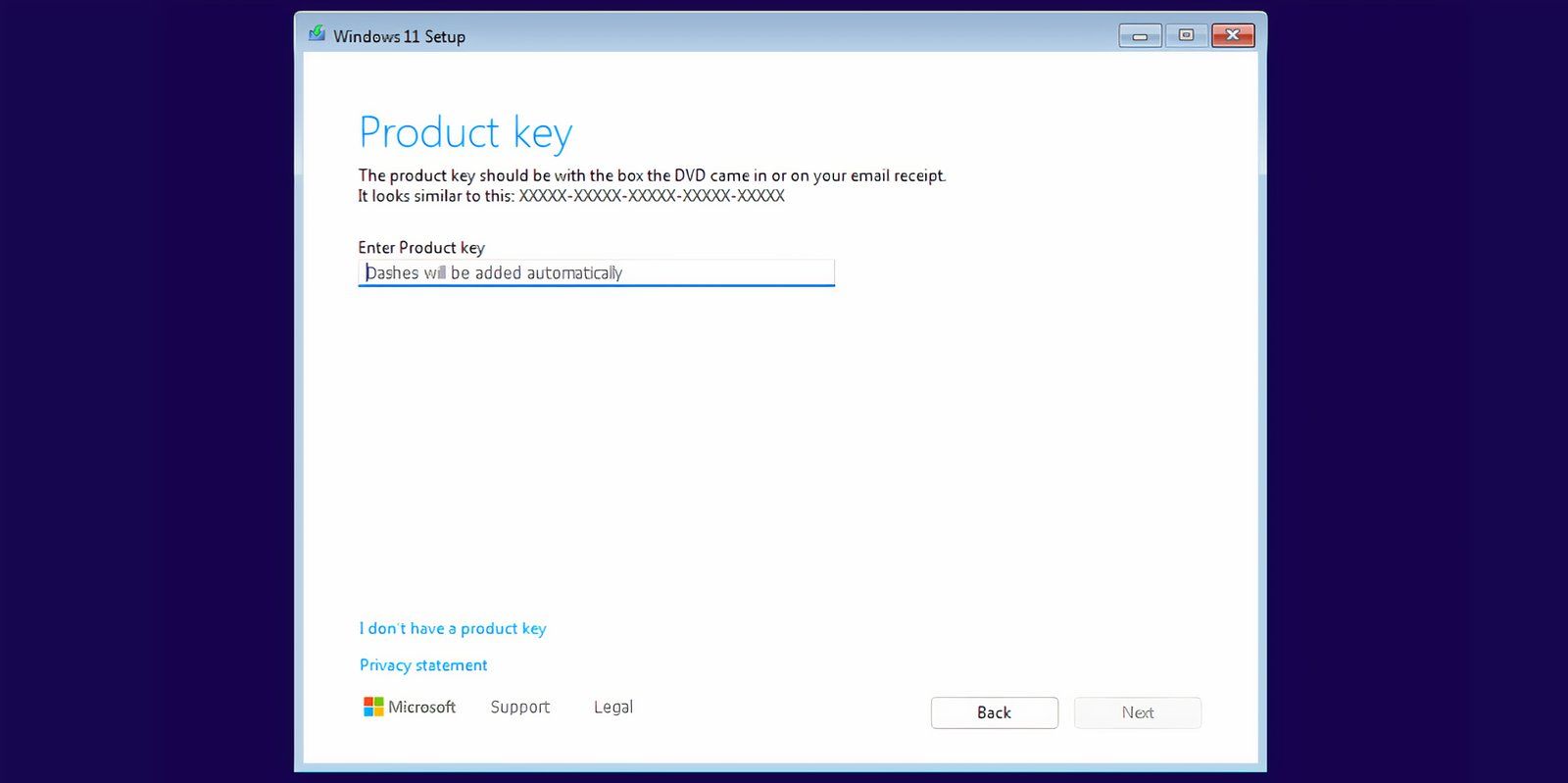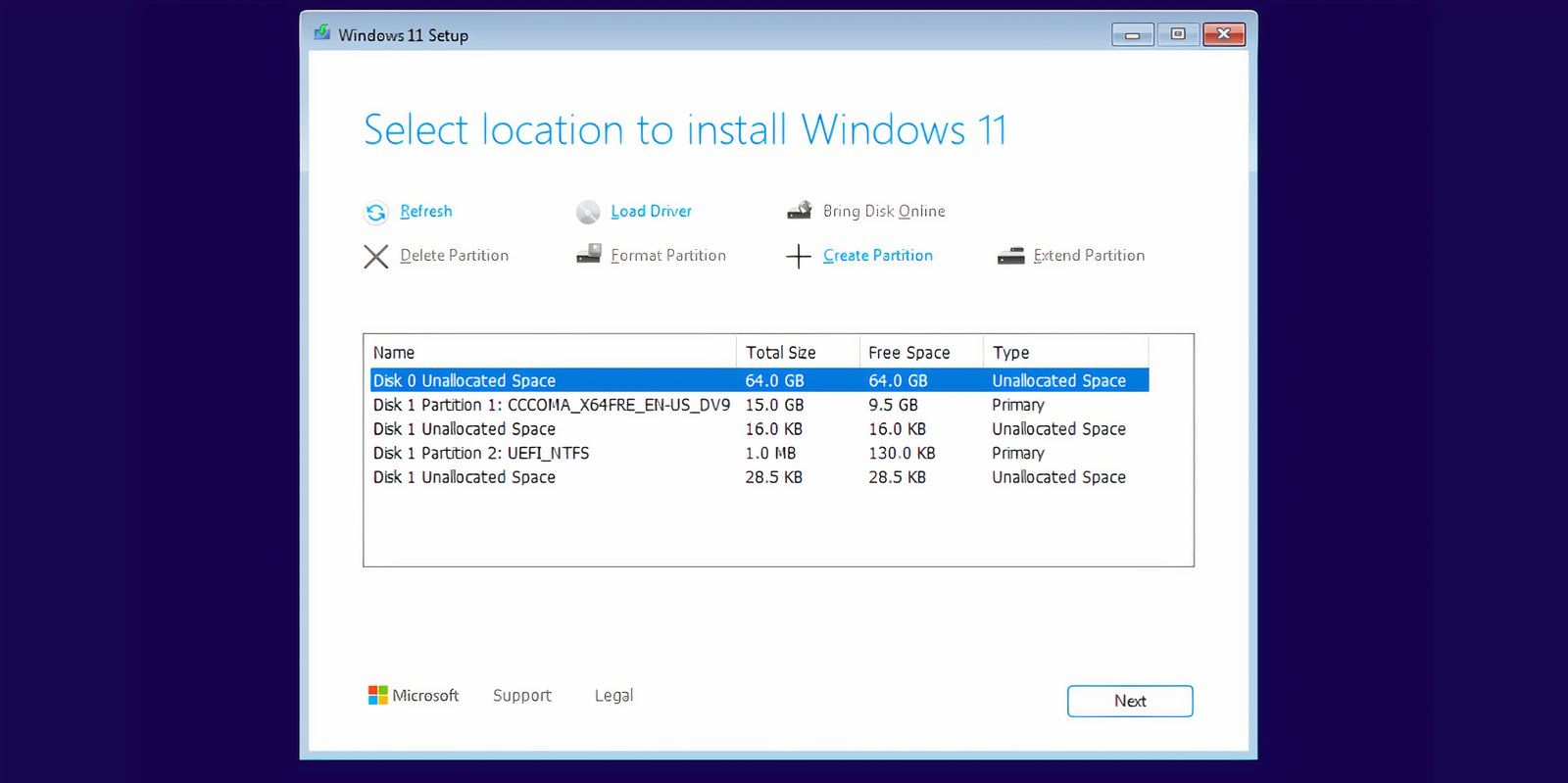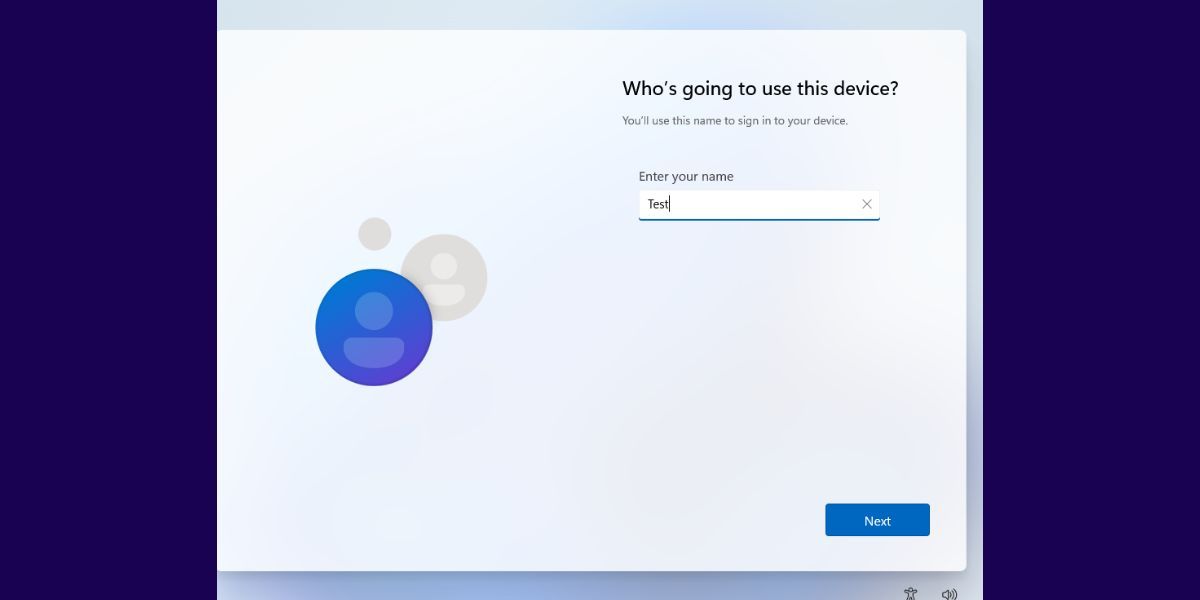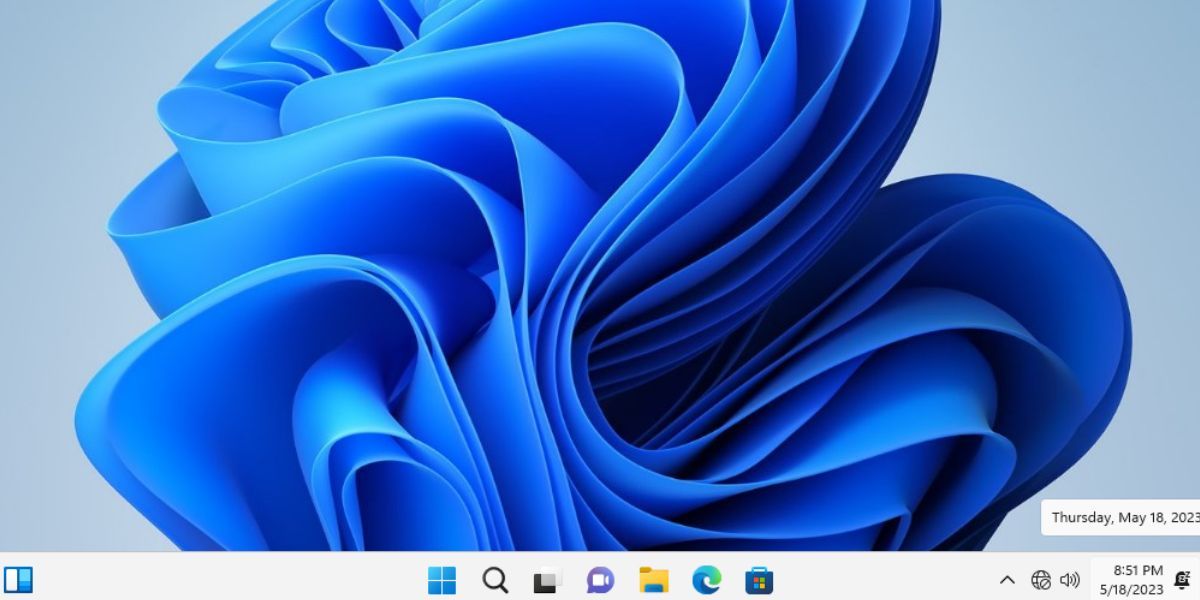Key Takeaways
- Rufus lets you create a Windows 11 bootable drive and bypass the TPM 2.0, Secure Boot, RAM, and Microsoft Account requirements.
- Rufus will speed up installation by letting you skip tracking setup pages, disabling BitLocker, and maintaining language settings.
- You can use Rufus to avoid lengthy setup procedures and unnecessary pop-ups.
You can use registry hacks and tweaked ISO files to bypass Windows 11’s TPM 2.0 and Secure Boot requirements. However, I recommend using Rufus instead. Here’s why.
Rufus version 3.2 and above allows you to create a tweaked Windows 11 bootable media. While creating the bootable USB drive, you can remove the 4GB RAM, TPM 2.0, Secure Boot, and Microsoft Account sign-in requirements.
Apart from these two tweaks, Rufus can also speed up the installation process by skipping the setup pages for tracking, disabling BitLocker encryption, and setting the same language and region options as your current PC. So, you can prepare a Windows 11 bootable drive that takes less time to install and set up on a new system.
How to Create a Bootable USB Drive Which Bypasses Windows 11 Requirements Using Rufus
Firstly, you need to download the latest version of Rufus from Microsoft Store, GitHub, or the official website. I suggest downloading the portable version of Rufus to avoid the installation process altogether.
Also, download the latest version of the Windows 11 ISO image file from the official Microsoft page.
After downloading the portable version of Rufus, repeat the following steps:
- Go to the downloads folder and double-click on Rufus to run the tool.
- UAC will pop up. Click on the Yes button to continue.
- Insert a USB drive into your Windows 11 system. Ensure that the USB drive has a capacity of 8 GB or more. Rufus will automatically recognize the USB drive.
- Click on the Select button in the Boot selection section. Browse your computer for the ISO file and select it.
- Next, click on the Partition scheme option. Select MBR if you want to use this USB drive on a system with BIOS or UEFI. Leave the Target system and Partition scheme untouched if you plan to use this bootable USB drive on a UEFI system.
- Navigate to the bottom of Rufus’ window and click on the Start button.
- A Windows User Experience box will open. Here, you can apply all the customizations you want to the Windows 11 bootable USB drive. Click on the checkbox in front of the Remove requirement for 4GB+ RAM, Secure Boot, and TPM 2.0 option.
- Similarly, select the Remove requirement for an online Microsoft account checkbox and Disable data collection (Skip privacy questions) checkbox.
- Click on the OK button. Rufus will generate a warning about deleting all data on the USB drive.
- Lastly, click on the OK button and wait for Rufus to create the bootable Windows 11 USB drive. Eject the drive after you see a “Ready” message.
How to Install the Modified Windows 11 on Your System
Repeat the following steps to install Windows 11 while bypassing its system requirements:
- Plug the bootable USB drive you created with Rufus into the target system. Press the designated F-key repeatedly (F10, F12, F2, or Esc) to enter the boot devices menu.
- Select the USB drive from the list using the arrow keys and press the Enter key to boot.
- Select the language and region and click on the Next button. Then, click on the Next again.
- Select the Install Windows 11 option and click on the checkbox below. Click Next.
- Click on the I don’t have the product key option.
- Select the version of Windows 11 you want to install (Home, Pro, Enterprise, or Education) and click Next.
- Accept the EULA and click on the Next button. Then, click on the Custom option.
- Pick the drive where you want to install Windows 11. Click on the Format button to format the drive and click Next.
- Review your decisions and click on Install.
- The setup will begin installing Windows 11 automatically. However, if TPM and Secure Boot bypass weren’t in place, you would never make it past the Enter product key page.
- Your system will restart a few times and then boot to the Windows 11 setup page. Disconnect your system from the internet. Otherwise, it will attempt to check and download updates, which can take a long time.
- Enter your Name and select three security questions and their answers as well. Click on Next.
- Windows will prepare your system and boot to the desktop after some time.
Rufus helps you avoid the excessively long route Windows 11 setup forces you to take during the installation. Confusing privacy and tracking settings take up a whole page, and you have to deal with pop-ups like Microsoft 365 and Xbox GamePass. You need to disable the six to eight toggles to opt out of it.
But you can avoid all these things using the multiple options in Rufus. If you want to keep the PC name and region settings on the target system the same as your primary system, you can select the Set regional options to the same values as this user’s and Create a local account with username checkboxes.
However, you will need to set up a new PIN if you plan to inherit the same username and region options as your main Windows computer. Otherwise, you won’t be able to log in.
Rufus remains one of the best ways to install Windows 11 and bypass Microsoft’s security requirements. Once you try it, you’ll likely never go back to Microsoft’s Media Creation Tool.

